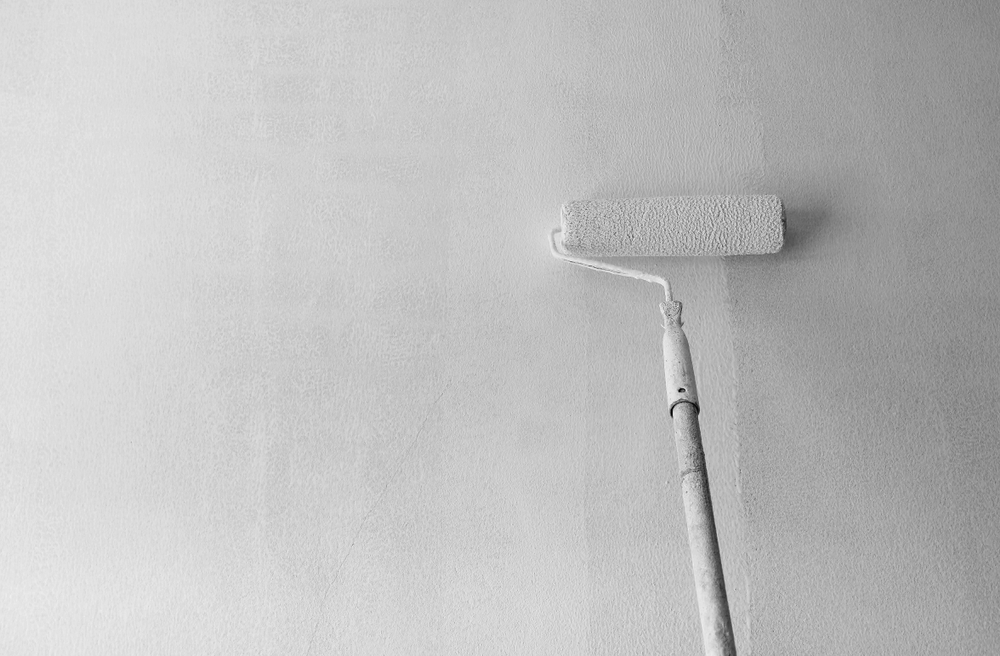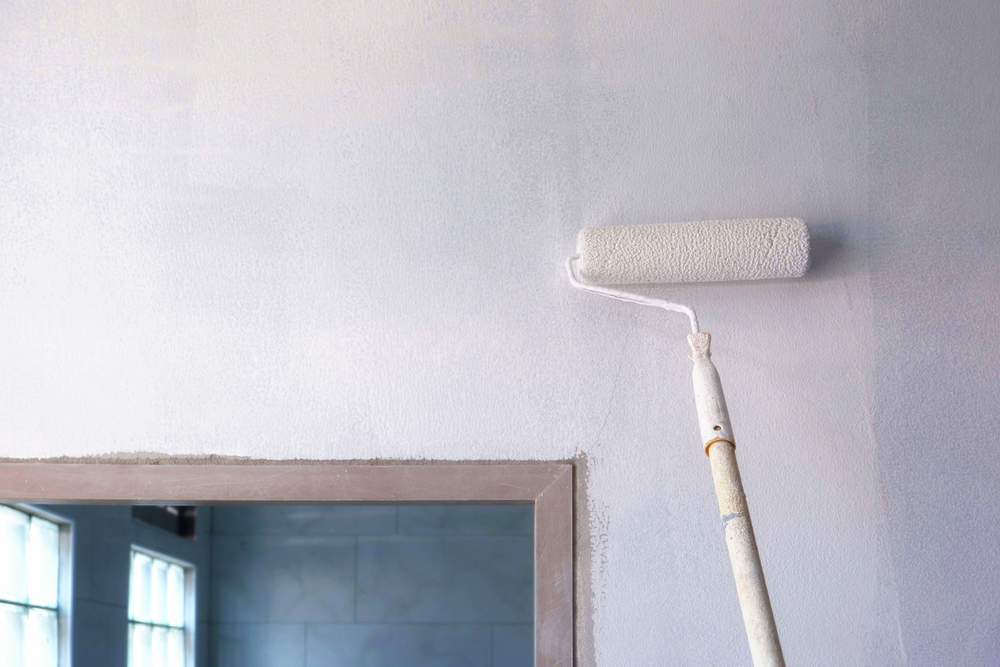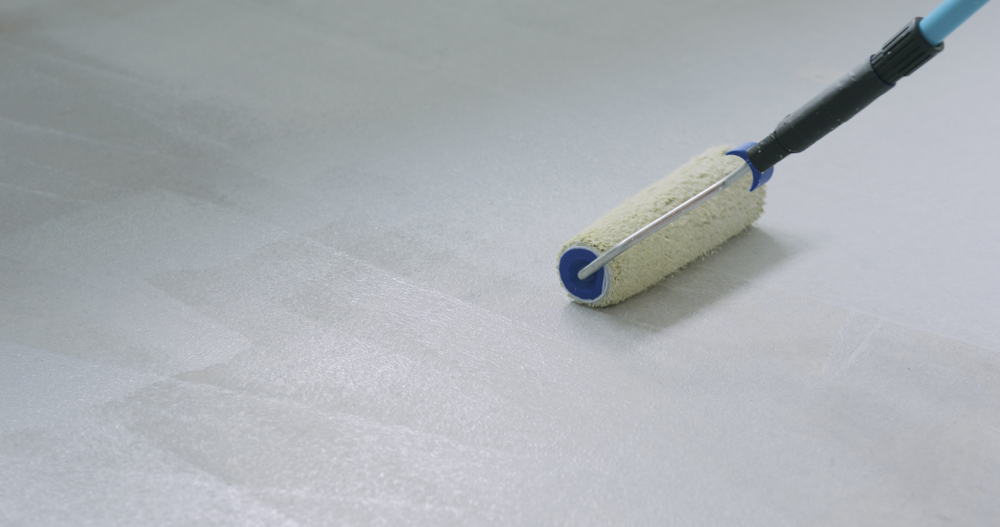Why Primer Matters in a Professional Painting Job
When people think about painting, they usually picture color—what shade to pick, how it’ll look on the wall, and how it’ll change a space. But the secret to a clean, long-lasting finish doesn’t start with the final coat. It starts with primer.
Using primer before painting helps create a solid base. It makes the color look better, last longer, and feel smoother to the touch. If you’ve ever dealt with paint that peeled, looked blotchy, or didn’t stick quite right, skipping the primer was probably part of the problem.
Whether you’re working on drywall in a brand-new home or repainting an older house in Columbus with wood trim or patchy walls, using the right primer sets the stage for a better result. It’s one of the most important steps in achieving a smooth and professional-looking paint finish.
What Is Primer?

Primer is an undercoat that’s applied before the actual paint. Primer helps your paint stick, stay, and look better. It’s designed to prepare different surfaces—like wood, drywall, or even metal—so the paint can hold up over time.
There are different types of paint primers, each made for a specific job. Some are oil-based primers, which work well on wood and stained areas. Others are water-based and better for drywall or previously painted surfaces. Some formulas are made to handle tough jobs, like stain-blocking primers that cover watermarks or dark spots.
Think of primer as the bridge between your wall and the color you want to see. It helps with paint adhesion, makes the color more even, and cuts down on the number of coats you’ll need. When applying primer, it’s not about getting a perfect look right away; it’s about getting your surface ready for your paint.
The Benefits of Using Paint Primers
Using primer might feel like an unnecessary extra step, but it does a lot behind the scenes. Here’s how it helps you get a better finish every time:
Helps Paint Stick to the Surface
One of the biggest reasons to use primer is for better paint adhesion. Without it, your paint might not bond properly to the wall or wood, which can lead to peeling or flaking later on. A good bonding primer gives your paint something to hold on to.
Seals Porous Surfaces
If you’re working with new drywall, raw wood, or patched areas, those spots can soak up paint unevenly. Primer seals the surface so your paint goes on smooth and consistent, helping you avoid blotchy or dull spots.
Blocks Stains and Discoloration
Some primers are made to deal with tough surfaces. A stain-blocking primer is great for covering things like smoke damage, water stains, or knots in wood. It stops those marks from bleeding through the fresh paint.
Creates a More Even Color
Dark walls can be hard to cover with lighter colors, and patches or uneven textures can show through thin coats. Using a primer paint creates a uniform base, so your final color looks solid and even.
Makes the Finish Smoother

If your goal is a smooth paint job, applying primer is a smart move. It fills in tiny gaps and rough spots, making it easier to get that clean, finished look when you paint. It’s a big part of ensuring a smooth and polished result.
When You Definitely Need Primer Painting
While you might not need primer for every job, there are situations where skipping it leads to trouble. Here’s when it’s worth taking the time:
New Drywall or Bare Wood
Fresh drywall or wood is very absorbent. If you go straight to paint, it’ll soak in unevenly and leave you with a rough or patchy look. A layer of primer seals it up and gives you a clean slate to work on.
Changing from Dark to Light Colors
If you’re covering a bold or dark color with something light, a primer helps block that old color so it doesn’t peek through. It cuts down on how many coats you’ll need.
Stained or Damaged Walls
Walls with grease spots, smoke stains, or water damage need more than just paint. A good stain-blocking primer covers those problem areas and helps you start fresh.
High-Moisture Areas
In places like bathrooms and kitchens, moisture can break down paint quickly. Using the right primer in these areas helps prevent bubbling, peeling, or mildew buildup.
After Repairs or Patching
If you’ve patched holes or fixed cracks, those areas will soak up paint differently than the rest of the wall. A coat of bonding primer helps even everything out so your final coat looks smooth.
Common Consequences of Skipping Primer

Skipping primer might seem like a time-saver, but it often leads to more work down the line. Here’s what can go wrong if you leave it out:
Peeling or Flaking Paint
Without primer, paint adhesion can be weak. Over time, that can lead to peeling, chipping, or flaking—especially in high-traffic areas or on tricky surfaces like glossy or patched spots.
Blotchy or Uneven Finish
If the surface underneath isn’t sealed properly, the paint can soak in unevenly. That means some areas will look dull while others look shiny. You’ll have a hard time getting a clean, consistent finish without a proper base.
More Coats Than You Planned For
When you skip primer, you might end up using more paint than expected. That’s because unprimed surfaces absorb the paint faster, and you’ll need extra coats just to cover everything.
The Paint Doesn’t Last as Long
Even the best paint won’t hold up if it doesn’t have a solid base. Skipping primer can shorten the life of the job and lead to earlier touch-ups or full repaints.
How We Apply and Sand Your Primer for Better Results
Using primer the right way makes a big difference in how your paint job turns out. Here’s what our experienced painters do to get it right:
Start with Clean, Dry Surfaces
Before anything goes on the wall, the surface needs to be clean and dry. Dirt, grease, or leftover peeling paint can stop the primer from sticking. We usually do some light sanding first to smooth things out and help the primer grab on better.
Choose the Right Primer—Oil-Based Primer, Bonding Primer & Stain-Blocking Primer
Different jobs call for different paint primers. For example, oil-based primers are great for wood or stained spots. A bonding primer helps your paint stick to slick or glossy surfaces. And a stain-blocking primer can hide smoke or water damage. Picking the right one means better results from the start.
Apply Evenly with the Right Tools
Whether it’s with a brush, roller, or sprayer, applying an even coat of primer is important. We don’t need it to look perfect—just solid enough to give the paint something to hold onto. A second coat might be needed on rough or heavily patched areas.
Let It Dry Before Paint
Rushing into painting before the primer is dry can mess up the whole project. We give the primer time to dry completely so your paint sticks well and the finish stays smooth.
Do You Always Need Primer? Not Always—Here’s When You Can Skip It
There are times when you don’t need to use a primer—but it depends on the job. If you’re repainting a wall that’s already in good shape, and you’re not changing colors too much, a high-quality paint with built-in primer might be enough. These “paint-and-primer-in-one” products work best on clean, previously painted surfaces.
Still, there’s a risk. Skipping primer when the wall has stains, repairs, or any kind of damage usually leads to a less even finish. If the surface is glossy, patched, or made of bare wood, that topcoat won’t stick well without some help. In those cases, a true paint primer is the smarter choice.
Bottom line? You can sometimes get away with it, but it’s not worth cutting corners if you care about paint adhesion, long-lasting results, or getting that smooth look. Priming might take extra time, but it saves you from having to redo the work later.
Contact Prim Painting to Schedule Your Next Painting Project Today
If you’re planning a home update, let our team in Columbus take care of it. Our painters handle every step—from surface prep and priming to painting and cleanup.
Call us today to schedule your next project, and let’s get your surfaces ready for a smoother, better-looking paint job.
